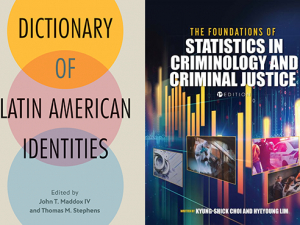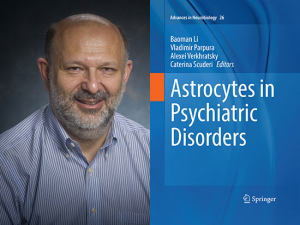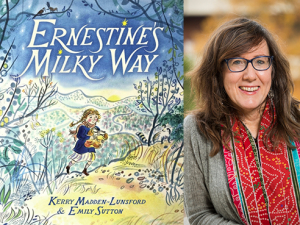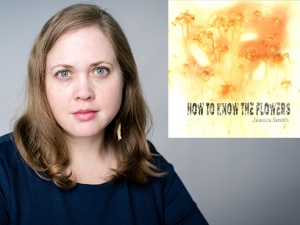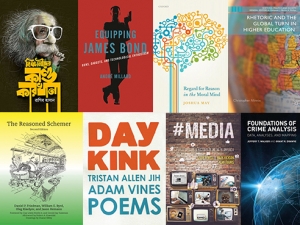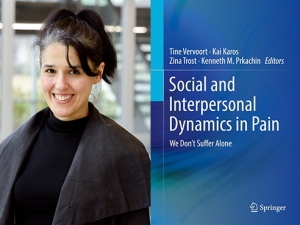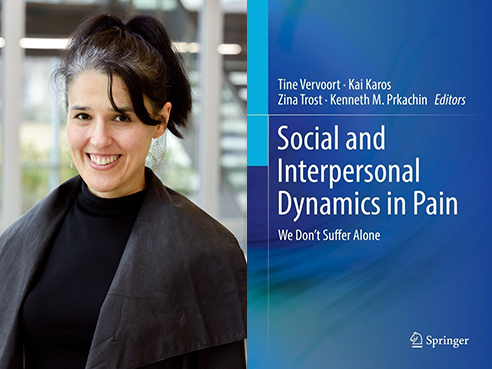 Zina Trost, Ph.D., edited the book “Social and Interpersonal Dynamics in Pain: We Don't Suffer Alone,” published in September by Springer.Zina Trost, Ph.D., has long studied the psychological mechanisms of the ways individuals cope with pain and injury. But it wasn’t until she and fellow researchers met at an international conference several years ago that they realized there wasn’t yet a compendium of work by the major players in interpersonal pain research. So together with several colleagues, Trost edited the book “Social and Interpersonal Dynamics in Pain: We Don't Suffer Alone,” published in September by Springer.
Zina Trost, Ph.D., edited the book “Social and Interpersonal Dynamics in Pain: We Don't Suffer Alone,” published in September by Springer.Zina Trost, Ph.D., has long studied the psychological mechanisms of the ways individuals cope with pain and injury. But it wasn’t until she and fellow researchers met at an international conference several years ago that they realized there wasn’t yet a compendium of work by the major players in interpersonal pain research. So together with several colleagues, Trost edited the book “Social and Interpersonal Dynamics in Pain: We Don't Suffer Alone,” published in September by Springer.
The book is an international collaboration. Trost first brainstormed the idea on a napkin at a conference bistro table in Milan in 2012 with Tine Vervoort, Ph.D., research professor in the Department of Experimental-Clinical and Health Psychology at Ghent University in Belgium, Kai Karos, a doctoral student at the Research Group for Health Psychology at the Katholieke Universiteit Leuven in Belgium, and Kenneth Prkachin, professor emeritus of psychology at the University of Northern British Columbia and pioneer in this area of research.
“We sketched out which categories we’d include and which researchers went with which,” Trost said. “Then we looked at each other and were like, ‘Are we really doing this?’”
“Social and Interpersonal Dynamics” is the first book of its kind, Trost says, and the first book she has edited. Until recently, most pain psychology research focused on what those in the field call “individual differences,” studying ways in which personality and other individual traits affect pain experience. Trost’s book explores new research that acknowledges that pain occurs in a social context; it’s not a new concept in psychology or behavioral therapies, but it is a newcomer to mainstream pain research. Vervoort is a pediatric pain psychologist focusing on the relationship between parents and children in pain, and Karos studies the effect of threatening interpersonal environments on the experience and expression of pain. Prkachin pioneered research on empathy and clinical applications of knowledge about pain expression.
“At this moment in time, if someone reads this book, it will put them at the cutting edge of everything salient going on in the established world of interpersonal processes and pain.” |
“There has been research in pockets all over the world looking at things like how we understand pain behavior, what is communicated in a social environment, how people react based on their environment and how one’s social history — such as a history of discrimination — influences pain experience,” Trost said. “It’s surprisingly only recently entering mainstream research.”
That’s where this new book comes in: It takes work from the top pain researchers studying these new developments and compiles it into one volume, designed to keep readers up-to-date on the trends. It will be a valuable resource for clinicians who deal in pain practice and management and for students and researchers interested in the social, interpersonal and emotional variables that contribute to pain, the processes with which pain is associated and the psychology of pain in general.
“At this moment in time, if someone reads this book, it will put them at the cutting edge of everything salient going on in the established world of interpersonal processes and pain,” Trost said. “It’s so great that UAB is featured on this world front.”


